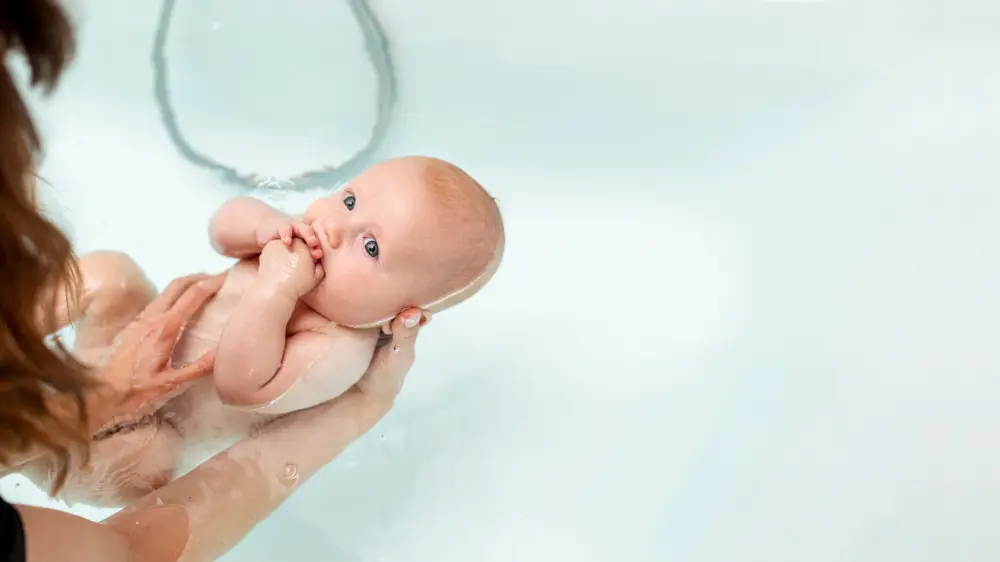Babies have a different attitude to the bath – some love it and have fun while bathing, while for others it turns out to be a not-so-pleasant activity and is accompanied by crying and dissatisfaction.
In any case, the bath is one of the important activities in raising a child and often it becomes the usual ritual before he falls asleep.
What are the rules to follow when bathing a baby?
- Temperature. Of course, the temperature of the water is most important. It should be pleasantly warm, but not hot. The recommendation is to first pour cold water into the trough or tub to a certain level and then add hot water to it.
Be sure to mix the water well so that there are no areas that are too hot and others that are too cold.
Checking the temperature can be done either with a thermometer or by feel. There are special water thermometers that are designed for this purpose, and there are troughs with thermometers built into them. However, it takes some technological time to measure the exact water temperature. It should be between 37 and 38 o C, which is close to normal body temperature.
The other way to check, which is also faster, is by dipping your elbow in the water. Then you should not feel the water either hot or cold.
Never put the child in the trough while the water is still running, as there is a risk that the temperature will change and this will cause unpleasant and even painful sensations for the baby.
- Air temperature. When bathing the baby, it is recommended that the room be 2-3 o C warmer than the air temperature during sleep (which should be between 20 and 22 o C). After removing from the water, cover the baby well with a towel, including its head. After removing it from the hot water, the air in the room is significantly colder and this can lead to hypothermia.
- Amount of water. For babies up to 6 months of age, it is recommended that the water is 8-10 cm. Since the baby cannot yet sit on its own, special pads can be used, on which it can be placed lying down. When the baby starts to sit, the water should not be above his hips.
Never leave the baby alone in the trough or bathtub, even if the water seems small to you. Only 5 cm of water is enough to cause a dangerous accident. In such a situation, the baby cannot “fight”, it does not make a sound to let you know that it is in danger.
- The technique. After putting the baby in the water, you can let him have fun for 1-2 minutes if of course, he likes it. Bath toys can also be used. Then start bathing with slow and smooth movements. Wash the head and face first, then down the body and limbs, and finally the buttocks. Be sure to use cosmetics designed specifically for babies. Hard soaps should be avoided especially in the first months as they dry out the skin.
After a bath, dry the skin well and apply cream or oil. The oil warms the skin more and is recommended for newborns who are still thermolabile. For older children, a cream can be used, and when applying it, the muscles can be massaged. This should be done when the baby is at least 4 kilograms. Gently massage the arms, back, and legs to improve blood circulation and stimulate the development and strengthening of the muscles.
After a bath, place the child on his stomach for a while, while massaging his back. This stimulates the development of the back muscles, which are of primary importance for head control, independent sitting, standing up, and turning.
The bath should be a pleasant activity for both the child and the parents. Therefore, if the baby does not like it, try to find an approach by which you can change his attitude to the bath – for example, turn the experience into a game by using different toys.
